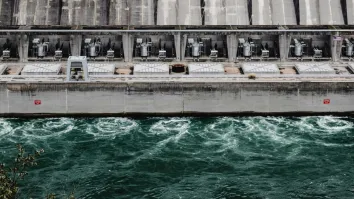
Clean power must meet Asian demand amidst fading coal investment
Weaning the region off coal is a challenge, with rising electricity requirements.
The pipeline of coal projects in Asia — home to 82% of the world’s coal generation — has been shrinking as loans to the sector dry up amidst a global push for renewable energy (RE), but RE investors need to be assured of profitability to ensure the rollout of clean plants.
Asian demand for electricity has been rising 5% a year, which makes it challenging for fast-growing economies in the region to reduce their reliance on fossil fuels, according to energy think tank Ember. That is why meeting electricity demand growth with clean power is key, it said in an October report.
“Coal financing is depleting for sure, but more stringent measures should be taken to ensure the funding goes towards renewables,” Dinita Setyawati, a senior electricity policy analyst for South East Asia at Ember, told Asian Power.
Asia started its electricity transition later than other regions but it is catching up fast, Ember said. The share of solar and wind in Asia is now almost the same as the world average, and the share of renewables in Asia’s electricity mix reached 27% last year.
“Two of the world’s top five absolute generators of wind and solar are in Asia, and the share of wind and solar is growing in Asian countries’ electricity mixes,” it added.
Ghee Peh, an energy finance specialist for Asian coal markets at the Institute for Energy Economics and Financial Analysis (IEEFA), said coal companies have turned to bonds as more banks shun their loan applications.
About 200 banks have set policies to exit coal financing, he said, citing an IEEFA report last year. In Asia, the number of financial institutions adopting exclusion policies rose from 10 between 2013 and April 2019 to 41 three years later.
Whilst most Asian countries have set long-term energy transition targets, many lack immediate plans for rapid transformations this decade.
Seytawati noted that Vietnam relies mainly on domestic financing for its energy projects, including coal. A key development was when the government extended the feed-in tariff period — the time a utility guarantees to buy electricity from a renewable energy generator at a fixed price — for solar energy.
Anti-competitive policies
This encouraged domestic investors to embark on larger-scale solar developments. However, these projects carry risks, such as potential revenue shortfalls, she pointed out. “There are also no measures to offset any of these reductions and financial mechanisms to address these risks in some of the developing markets in Southeast Asia,” she added.
There is also a lack of private sector interest to invest in the energy transition in the absence of a strong ecosystem and compliance standards, Seytawati said. If fossil fuel revenue streams are cut, securing replacement revenue from RE becomes challenging, especially since the supply chain is not yet developed, she added.
She said countries in the region should boost bilateral ties to encourage more capital investment in renewable energy. “For example, if Indonesia is going to export nickel to a certain country, then the receiving countries need to apply stringent measures,” she said.
“The nickel processing has to be done with renewables. Specific things like that could help the national government realize that renewables are really in demand for the industries to make their economy grow,” she added.
Setyawati expects Singapore to lead the shift in RE financing given its push for energy imports.
In September, Singapore granted conditional approvals to Singa Renewables Pte Ltd, a joint venture between TotalEnergies and RGE, and Shell Eastern Trading (Pte.) Ltd, in partnership with Vena Energy, to import 1.4 gigawatts of low-carbon electricity from Indonesia.
Peh said countries like Indonesia should re-examine policies that favour coal-fired power, such as the domestic market obligation, which mandates a percentage of the country's coal production to be sold domestically.
There’s also the take-or-pay contract, which requires the state-owned utility PT Perusahaan Listrik Negara to buy power from suppliers regardless of demand. This makes it difficult for renewable energy players to compete and can lead to higher system costs.



















 Advertise
Advertise






